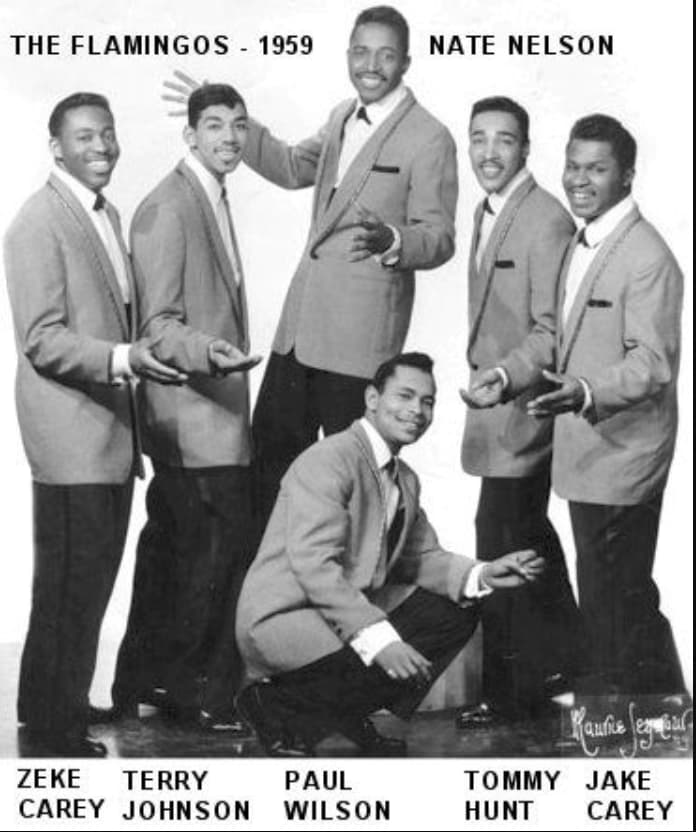
Whispers of Satin and Moonlight: When The Flamingos Painted Romance in Midnight Blue
“I’m In The Mood For Love” by The Flamingos is a timeless ballad, a velvet-smooth declaration of yearning, capturing the intoxicating vulnerability of falling deeply in love. It’s a song that transforms a simple phrase into an eternal sentiment.
Released in 1961, this exquisite rendition of the standard, originally composed by Jimmy McHugh with lyrics by Dorothy Fields in 1935, reached number 5 on the Billboard R&B chart, and number 53 on the Billboard Hot 100. Though its chart performance might not scream “blockbuster” to modern ears, its enduring legacy speaks volumes. It’s a testament to the power of a song that transcends trends, settling instead into the collective consciousness as a quintessential expression of romantic longing.
The story behind The Flamingos’ version of “I’m In The Mood For Love” is one of evolution and refinement. The group, known for their innovative harmonies and sophisticated arrangements, had seen personnel changes over the years, but the core essence of their sound remained. This particular recording, featured on their album “Flamingo Serenade,” showcased the group at a mature stage, possessing a nuanced understanding of how to weave emotion into every note. Their approach to the song was less about youthful exuberance and more about a seasoned, almost wistful appreciation for the complexities of love.
The meaning of “I’m In The Mood For Love” is deceptively simple, yet profoundly resonant. It’s a confession, a whispered plea, a surrender to the overwhelming power of affection. The song is not just about the thrill of new romance; it’s about the deep, almost aching desire for connection. It’s a moment of vulnerability, a willingness to lay bare one’s soul, to admit that one is utterly captivated. In the context of The Flamingos’ rendition, this vulnerability is heightened by the group’s lush harmonies, which create an atmosphere of intimate warmth, as if the singers are confiding in each listener personally.
For those of us who remember the late nights of the early 1960s, the soft glow of a record player casting shadows on the walls, “I’m In The Mood For Love” evokes a powerful sense of nostalgia. It was a time when music was often a refuge, a way to express feelings that were difficult to articulate. The Flamingos’ version, with its smooth, almost ethereal quality, became the soundtrack to countless romantic moments, a gentle reminder of the enduring power of love. The song’s arrangement, with its slow, deliberate tempo and its emphasis on vocal harmony, created a sense of timelessness, a feeling that this music could exist outside of any specific era.
The song’s enduring appeal also lies in its universality. Whether you were a teenager experiencing the heady rush of first love or a seasoned adult reflecting on a lifetime of relationships, “I’m In The Mood For Love” spoke to the shared human experience of yearning for connection. It’s a song that reminds us that, despite the passage of time, the emotions that drive us remain constant. It’s a testament to the power of music to capture the essence of human experience, to create a moment of shared understanding and emotional resonance. And in the hands of The Flamingos, that moment becomes something truly magical, a whisper of satin and moonlight that continues to enchant generations.